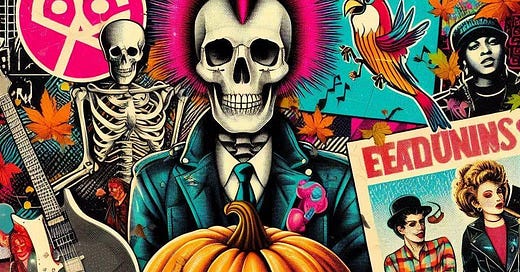Hey Friends! I know Halloween was yesterday, but I am still feeling the spooky season spirit. No tricks here, just a literary treat.
Is the Answer Actually 42?
In Douglas Adams’ science fiction novel, The Hitchhikers Guide to the Galaxy, the super computer Deep Thought states:
The Answer to the Great Question... Of Life, the Universe and Everything... Is... Forty-two.
When met with incredulity to this response, Deep Thought replies:
I think the problem, to be quite honest with you, is that you've never actually known what the question is.
This anecdote, first published in 1979, offers an interesting analogy for how we might consider ChatGPT and other large language models.
Knowledge and information alone aren't enough. Value comes from knowing what to ask. AI can help you explore ideas, learn new things, and find previously unseen insights, but only if you provide the right question to uncover the deeper meaning behind the answers it already possesses.
It’s becoming increasingly clear to me that AI tools will continue to enable what was once too complicated or difficult.
I’ve personally used it to build coding projects that were beyond my own skill level, asked it questions to clarify personal misunderstandings, and punched up my writing by asking it to find weak arguments and errors in my reasoning.
Takeaway: It seems unlikely to me that the answer to life’s big question will actually be 42, but then again, maybe we still haven’t asked the right question.
What To DO > How To DO
Scott Belsky, chief product officer at Adobe, recently appeared on the Colin and Samir Show to discuss the latest developments in the creative suite. Many of the advances they’re ushering in are AI powered and greatly lower the technical barriers around digital creative work.
Consider your family photo albums. You maybe have one photo of your great grandparents, perhaps an entire photo album of your grandparents, several shoe boxes of photos of your parents, stacks from your childhood, and now 100,000 perfectly color graded photos of a sandwich you ate on Thursday,
Technical advances increase accessibility to creativity. Belsky argues that we are on the verge of shifting, in most creative endeavors, from how to do, to what to do.
Takeaway: If the creative act is boiled down to simple text based prompts, NOT being creative may become an active decision.
Miss Excel
Last week I wrote about Kevin Kelly’s advice to abstain from seeking to be the best, and to instead seek to be the only. Meet Miss Excel:
She’s a dancing TikToker who ALSO posts helpful tips to become a Microsoft Excel power user. Certainly in a category by herself. How has this worked out for her? She:
has nearly 1,000,000 followers on TikTok
generates over $2,000,000 annually from her content
has tailored her lifestyle around work life balance (only working 4 hours per day)
Having taught spreadsheets to high school students myself, I know just how hard it is to make this subject matter interesting. Miss Excel found a way, and with no real competition to speak of, gets to live on her own terms.
Takeaway: we may already be world class at something if only we could discover the intersection of our disparate interests.
As Long As It Is Interesting
On David Perell’s YouTube channel, he interviews writers to uncover their writerly secrets. In the episode featuring Shaan Puri, serial entrepreneur and co-host of the podcast “My First Million,” Puri stated the following:
It should be as long as it is interesting.
Like most children, I was taught (and as a teacher have even taught myself) a very strict formula for writing THE five paragraph essay: introductory paragraph, three supporting paragraphs, and a concluding paragraph each comprised of roughly five sentences. Use transition words, and NEVER start a sentence with “and” or “but.”
But writing on the internet is different (see what I did there?)
It’s not only ok, but encouraged, to break form online. The best writing I read is conversational in nature, absent of $10 words, and scannable. It feels like a personable message from a friend. It gives me what I need, and nothing I don’t.
As I write this newsletter, I imagine writing to one person—my older brother Bill (Dave doesn’t subscribe), and I constantly ask myself will he find this interesting? If the answer is ever no, I cut it from the newsletter, shorten it, or rewrite it until it is. I’ve found heuristics like these to be helpful in finding my voice and writing the way I’d like to read.
*Sorry for using the words “heuristics”
Font of the Week
I’m a font geek. Few things get me as excited as well shaped letter forms. I’d like to introduce a new feature in this newsletter: font of the week:
Poppins is a Google Font, so it’s usable in Google Docs and Slides. It’s also downloadable to use on your computer. I love it for websites, and use it on most of my projects. Check it out on my personal website at: mmacfadden.com.






I don’t like Arial. And I make sure I use Times New Roman even when I write reports. If I need a different font I spend quite a bit of time trying them out to see if they’d fit, like clothes for my writing. Am I a font geek?🤔
I was skimming the article to read later but you got me with Font of the week!
I’ll look forward to it! I LOVE fonts.
Difficult to choose what to use sometimes 😂
I know use Gabarito a lot, as well as Inter.
Darker Grotesque has a tech feel to it that I enjoy for presentations too.